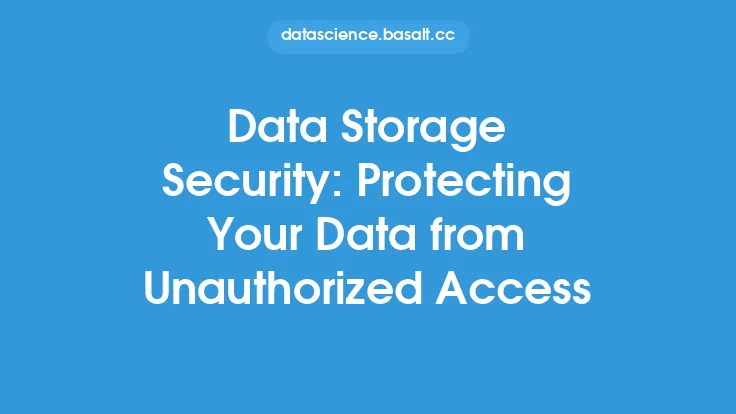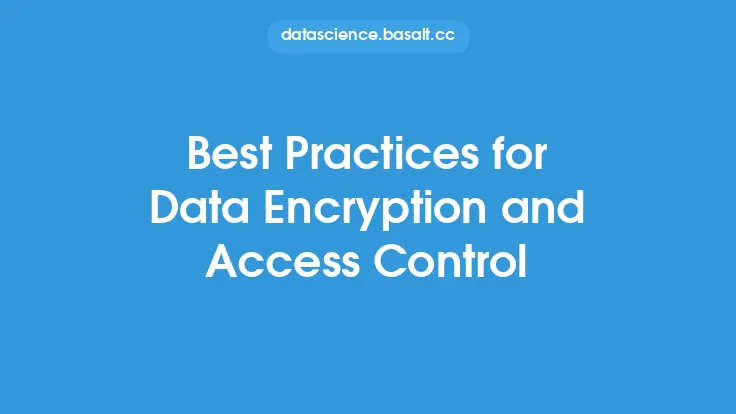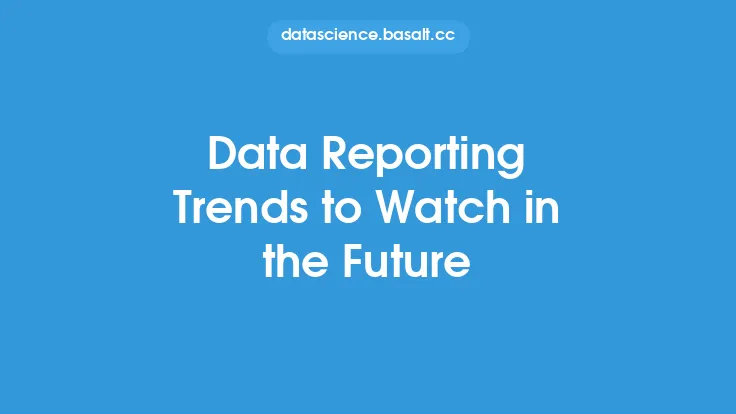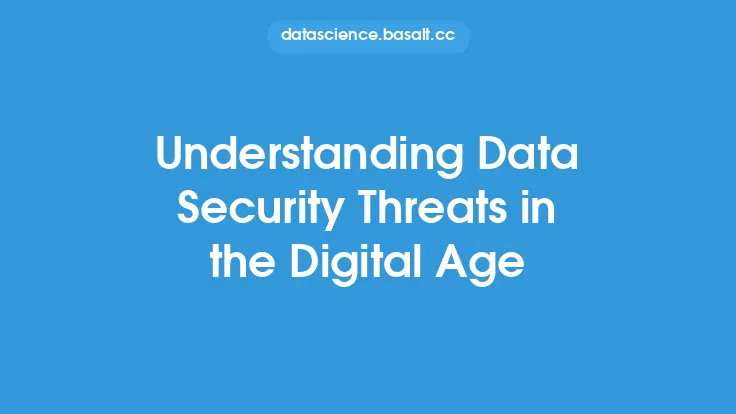Access control is a fundamental concept in data security that refers to the process of granting or denying access to data, systems, or resources based on user identity, role, or other factors. It is a critical component of data security engineering, as it helps to prevent unauthorized access, use, disclosure, disruption, modification, or destruction of data. In this article, we will delve into the world of access control, exploring its importance, types, models, and techniques, as well as its implementation and management.
Importance of Access Control
Access control is essential in data security because it helps to protect sensitive data from unauthorized access, which can lead to data breaches, identity theft, and other security threats. By controlling access to data, organizations can ensure that only authorized personnel can access, modify, or delete sensitive information. This is particularly important in industries that handle sensitive data, such as healthcare, finance, and government. Access control also helps to prevent insider threats, where authorized personnel may intentionally or unintentionally compromise data security.
Types of Access Control
There are several types of access control, including:
- Discretionary Access Control (DAC): This type of access control grants access to data based on user identity and ownership. Users can set permissions for their own data, and access is granted or denied based on these permissions.
- Mandatory Access Control (MAC): This type of access control grants access to data based on user clearance and data classification. Access is granted or denied based on a set of rules that are defined by the system administrator.
- Role-Based Access Control (RBAC): This type of access control grants access to data based on user role. Users are assigned roles, and access is granted or denied based on these roles.
- Attribute-Based Access Control (ABAC): This type of access control grants access to data based on user attributes, such as department, job function, or security clearance.
Access Control Models
Access control models are frameworks that define how access control should be implemented. Some common access control models include:
- Bell-LaPadula Model: This model is based on the concept of confidentiality and defines a set of rules for accessing classified data.
- Biba Model: This model is based on the concept of integrity and defines a set of rules for accessing data to prevent unauthorized modification.
- Clark-Wilson Model: This model is based on the concept of integrity and defines a set of rules for accessing data to prevent unauthorized modification.
Access Control Techniques
Access control techniques are methods used to implement access control. Some common access control techniques include:
- Authentication: This technique verifies the identity of users before granting access to data.
- Authorization: This technique grants or denies access to data based on user identity, role, or other factors.
- Access Control Lists (ACLs): This technique grants or denies access to data based on a list of users or groups that are allowed or denied access.
- Group Policy: This technique grants or denies access to data based on a set of rules that are defined by the system administrator.
Implementation and Management
Implementing and managing access control requires careful planning and execution. Some best practices for implementing and managing access control include:
- Conducting a risk assessment: This involves identifying potential security threats and vulnerabilities, and implementing access control measures to mitigate these risks.
- Defining access control policies: This involves defining a set of rules and procedures for accessing data, and ensuring that these policies are communicated to all users.
- Implementing access control techniques: This involves implementing access control techniques, such as authentication, authorization, and ACLs, to grant or deny access to data.
- Monitoring and auditing access control: This involves monitoring and auditing access control to ensure that it is working effectively, and making changes as needed to prevent security breaches.
Access Control in Modern Systems
Access control is an essential component of modern data security systems. Many modern systems, such as cloud computing, big data, and internet of things (IoT), require advanced access control mechanisms to protect sensitive data. Some modern access control techniques include:
- Cloud access control: This involves implementing access control mechanisms in cloud computing environments to protect sensitive data.
- Big data access control: This involves implementing access control mechanisms in big data environments to protect sensitive data.
- IoT access control: This involves implementing access control mechanisms in IoT environments to protect sensitive data.
Challenges and Limitations
Access control is not without its challenges and limitations. Some common challenges and limitations include:
- Complexity: Access control can be complex to implement and manage, particularly in large and distributed systems.
- Scalability: Access control can be difficult to scale, particularly in systems with a large number of users and resources.
- Flexibility: Access control can be inflexible, particularly in systems where access control policies need to be changed frequently.
- Usability: Access control can be difficult to use, particularly for users who are not familiar with access control concepts and techniques.
Conclusion
Access control is a critical component of data security engineering that helps to protect sensitive data from unauthorized access. By understanding the importance, types, models, and techniques of access control, organizations can implement effective access control mechanisms to prevent security breaches and protect sensitive data. While access control can be complex and challenging to implement and manage, it is an essential component of modern data security systems. By following best practices and using modern access control techniques, organizations can ensure that their sensitive data is protected from unauthorized access.





